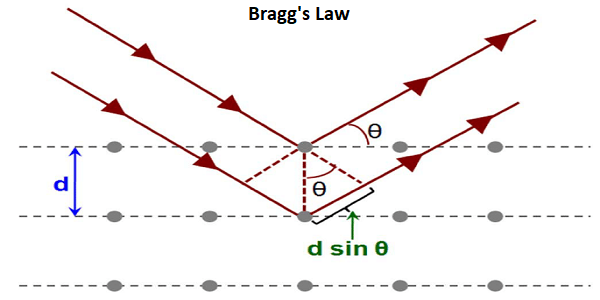What is Bragg’s Law?
Bragg’s law is a special case of Laue diffraction which determines the angles of coherent and incoherent scattering from a crystal lattice. When X-rays are incident on a particular atom, they make an electronic cloud move just like an electromagnetic wave. The movement of these charges radiates waves again with similar frequency, slightly blurred due to different effects, and this phenomenon is known as Rayleigh scattering.
The same process takes place upon scattering neutron waves via nuclei or by a coherent spin interaction with an isolated electron. These wavefields which are re-emitted interfere with each other either destructively or constructively, creating a diffraction pattern on a film or detector. The basis of diffraction analysis is the resulting wave interference, and this analysis is known as Bragg diffraction.
Bragg Equation
According to Bragg Equation:
nλ = 2d sinΘ

Therefore, according to the derivation of Bragg’s Law:
- The equation explains why the faces of crystals reflect X-ray beams at particular angles of incidence (Θ, λ).
- The variable d indicates the distance between the atomic layers, and the variable Lambda specifies the wavelength of the incident X-ray beam.
- n as an integer.
